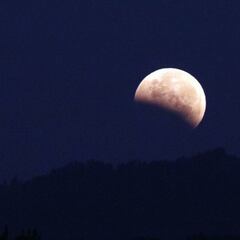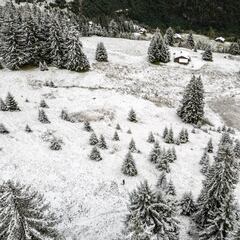What is a partial lunar eclipse?
While it may not be as spectacular as a “blood moon” partial lunar eclipses are still a sight to behold, and one is coming this September.

There are a number of celestial phenomena that skywatchers can enjoy and this month has a pair of them that you won’t want to miss. Beginning September 27 the “comet of the century” will come into view. Comet C/2023 A3 (Tsuchinshan-ATLAS) is expected to have a more prominent tail than usual and could surpass the brightness of NEOWISE that was visible to the naked eye in the summer of 2020.
Just around the corner though is a partial lunar eclipse. While not as spectacular as a blood moon, it will still be a sight to behold as a little “reddish bite” will be taken out of the full super Harvest Moon.
You may also be interested in: Lunar eclipse of the Full Harvest Moon: when and where is the best time to watch?
BIG NEWS, STARGAZERS! The #HarvestMoon is going to be partially eclipsed! On 9/17, 10% of the full Moon will be covered by Earth’s shadow, reaching maximum coverage at 9:45pm CDT.
— AdlerPlanet (@AdlerPlanet) September 10, 2024
What questions do you have about this #LunarEclipse? ✨ pic.twitter.com/2yCofVPM4d
What is a partial lunar eclipse?
Lunar eclipses occur when the Sun, Earth and Moon align allowing the Moon to pass through the Earth’s shadow. During a total lunar eclipse, the Moon passes through the darkest part of the Earth’s shadow, known as the umbra or its inner shadow.
These events are also called “blood moons” as the Sun’s light gets bent by the Earth’s atmosphere leaving only the red wavelengths, thus giving the Moon its reddish hue. These astronomical phenomena like solar eclipses have generally portended bad omens.
Related stories
On the other hand, during a partial lunar eclipse only a portion of the Moon passes through the Earth’s umbral shadow. So as Bill Cooke, the head of NASA’s Meteoroid Environment Office says people will notice “a ‘reddish bite’ being taken out of the top part of the Moon,” when this occurs.
Were the Moon not to pass through any part of the umbral shadow, it would be simply known as a penumbral lunar eclipse. These can be difficult to observe as the Moon’s surface is slightly darkened as it moves through Earth’s outer shadow where direct sunlight still reaches the Moon.



Complete your personal details to comment